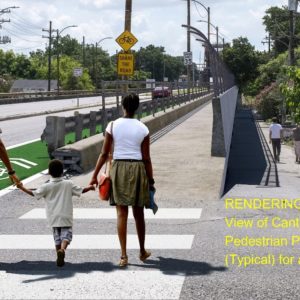GEC was responsible for the electrical and structural design components of the proposed in‐line replacement of the existing Strauss Heel Trunnion Bascule Bridge with a new proposed Rolling Lift Bascule Bridge.
The bridge is owned, operated, and maintained by the Port of New Orleans and has two operational railroad tracks with two vehicular traffic lanes closed to traffic due to damages from hurricanes. The existing bridge, to be replaced, was opened to traffic in 1920 and has a navigational span of 117’ and a tower span of 42’ and is a combination railroad and highway bridge which was opened to traffic in 1920. The existing bridge river spans consist of painted riveted steel through truss type movable bascule span supported by concrete type piers on piles and are simple span structures for railroad and highway traffic. Each approach structure consists of painted riveted steel girders and concrete type piers on piles.
As a subconsultant, GEC services included the following:
- Preparing preliminary movable bridge structural superstructure design calculations for the proposed combination highway and railway steel trusses, portals, sway frames, stringers, girders, floorbeams, diaphragms, bearings, track girders rack frames, counterweights, open grid floorings, and barriers for the proposed single leaf Scherzer Rolling Lift Bascule 204’ span.
- Performing preliminary electrical and control design for the bridge which required that no PLC/computers be used to control the bridge operation, resulting in a control system completely composed of hardwired relays.
- Conceptualizing installation of the bridge controls; because the bridge provides the only railroad access to a busy port over an active navigation channel, design provisions must be made to allow the removal of the existing bridge and installation of the new bridge in less than seven days. The new control building will be located on the opposite river side of the existing control room. Utilities had to be located to feed the new control room while allowing the old control room to remain operable.
- Completing final design for structural and electrical.
Due to budget constraints, the project did not proceed to construction.
